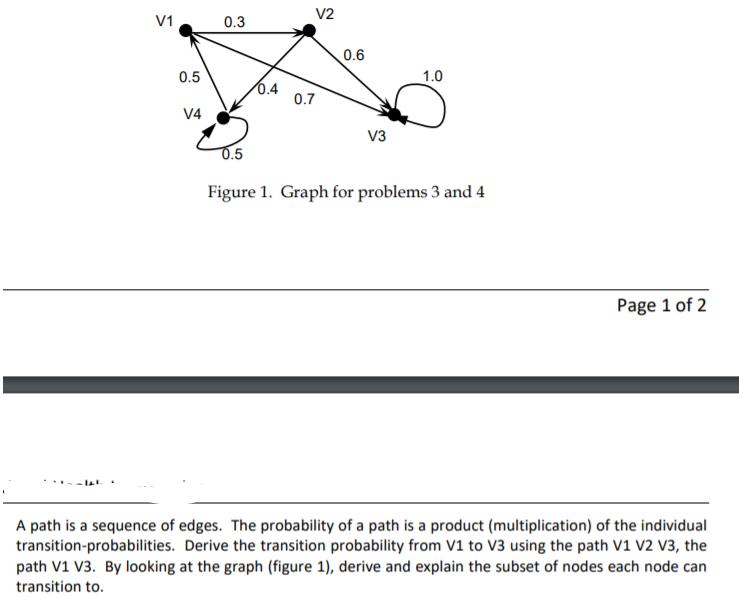Question
V1 0.5 V4 0.3 0.5 0.4 V2 0.7 0.6 V3 1.0 Figure 1. Graph for problems 3 and 4 Page 1 of 2 A

V1 0.5 V4 0.3 0.5 0.4 V2 0.7 0.6 V3 1.0 Figure 1. Graph for problems 3 and 4 Page 1 of 2 A path is a sequence of edges. The probability of a path is a product (multiplication) of the individual transition-probabilities. Derive the transition probability from V1 to V3 using the path V1 V2 V3, the path V1 V3. By looking at the graph (figure 1), derive and explain the subset of nodes each node can transition to.
Step by Step Solution
There are 3 Steps involved in it
Step: 1

Get Instant Access to Expert-Tailored Solutions
See step-by-step solutions with expert insights and AI powered tools for academic success
Step: 2

Step: 3

Ace Your Homework with AI
Get the answers you need in no time with our AI-driven, step-by-step assistance
Get StartedRecommended Textbook for
An Introduction To Statistical Methods And Data Analysis
Authors: R. Lyman Ott, Micheal T. Longnecker
7th Edition
1305269470, 978-1305465527, 1305465520, 978-1305269477
Students also viewed these Computer Network questions
Question
Answered: 1 week ago
Question
Answered: 1 week ago
Question
Answered: 1 week ago
Question
Answered: 1 week ago
Question
Answered: 1 week ago
Question
Answered: 1 week ago
Question
Answered: 1 week ago
Question
Answered: 1 week ago
Question
Answered: 1 week ago
Question
Answered: 1 week ago
Question
Answered: 1 week ago
Question
Answered: 1 week ago
Question
Answered: 1 week ago
Question
Answered: 1 week ago
Question
Answered: 1 week ago
Question
Answered: 1 week ago
Question
Answered: 1 week ago
Question
Answered: 1 week ago
Question
Answered: 1 week ago
Question
Answered: 1 week ago
Question
Answered: 1 week ago
Question
Answered: 1 week ago
View Answer in SolutionInn App



